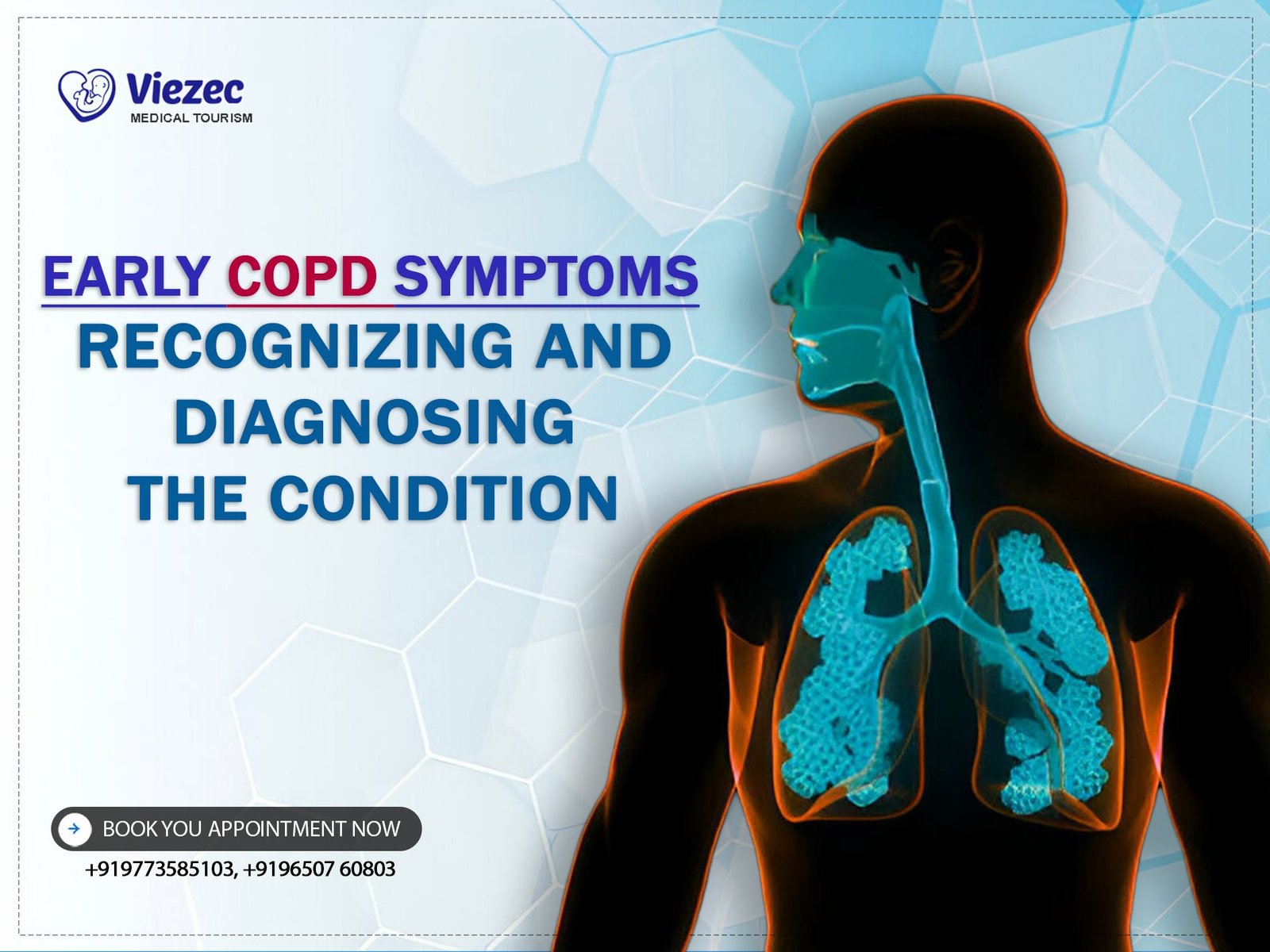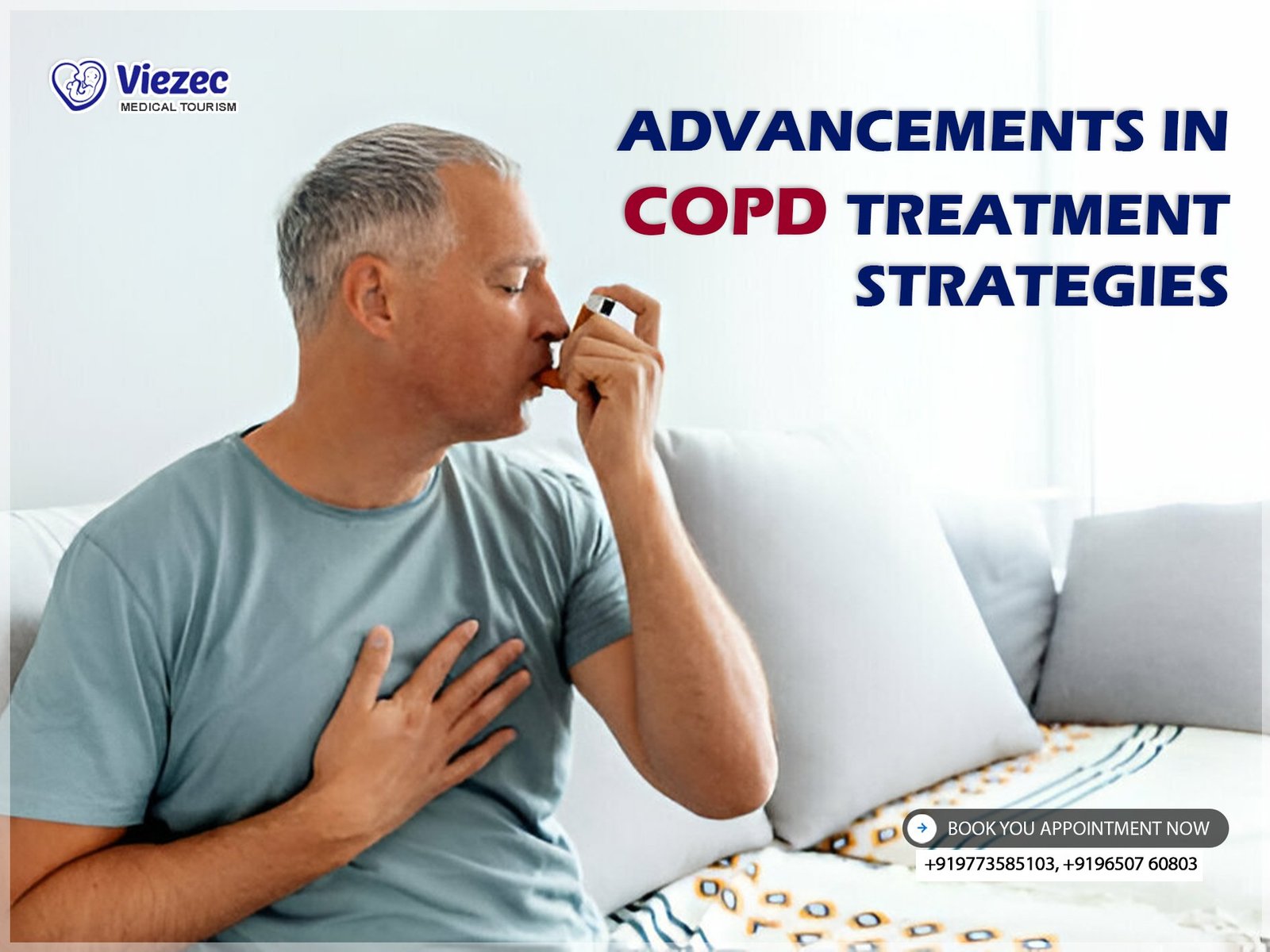Chronic Obstructive Pulmonary Disease (COPD) is a progressive lung condition that significantly impacts breathing and overall respiratory health. Early recognition and diagnosis of COPD are crucial for effective management and improving the quality of life for those affected. This article delves into the early symptoms of COPD, diagnostic methods, and management strategies, providing a comprehensive guide to understanding this debilitating condition.
Introduction to COPD Symptoms
Understanding COPD
COPD is a chronic inflammatory lung disease that obstructs airflow from the lungs, primarily due to long-term exposure to irritating gases or particulate matter, most often from cigarette smoke. The disease encompasses two main conditions: chronic bronchitis and emphysema. Chronic bronchitis involves long-term inflammation of the bronchial tubes, leading to mucus build-up and coughing. Emphysema, on the other hand, destroys the alveoli (air sacs) in the lungs, reducing the surface area for gas exchange and causing breathlessness. Understanding COPD’s nature and progression is essential in identifying and managing the disease effectively.
Importance of Recognizing Early Symptoms of COPD
Early recognition of COPD symptoms is vital because it allows for timely intervention, which can slow disease progression, improve quality of life, and reduce the risk of severe complications. Many people dismiss early symptoms as signs of aging or minor respiratory issues, leading to delayed diagnosis and treatment. Awareness of early COPD symptoms can prompt individuals to seek medical attention sooner, enabling healthcare providers to implement appropriate therapeutic strategies and lifestyle changes that can mitigate the disease’s impact.
Common Early COPD Symptoms
Chronic Cough
One of the hallmark early symptoms of COPD is a chronic cough. This cough is persistent and often accompanied by the production of mucus (sputum). The persistent nature of the cough differentiates it from a common cold or seasonal allergies, as it lingers for months or even years. Individuals may experience coughing episodes at various times of the day, often worsening in the morning. The frequency and intensity of the cough can significantly disrupt daily activities and sleep patterns, making it a notable symptom to watch for.
Shortness of Breath
Another prominent early symptom of COPD is shortness of breath, particularly during physical activities. Initially, individuals may notice breathlessness during exertion, such as climbing stairs, walking briskly, or performing routine household chores. As the disease progresses, even minimal physical exertion can trigger significant breathlessness. This symptom often leads to reduced physical activity, as individuals may start avoiding tasks that cause discomfort. Recognizing this symptom early can prompt further evaluation and intervention to manage the condition effectively.
Respiratory Symptoms in COPD
Wheezing and Whistling Sound
Wheezing, characterized by a high-pitched whistling sound during breathing, is a common early symptom of COPD. This sound occurs due to narrowed airways, which restrict airflow and create turbulence. Wheezing can be more pronounced during exhalation and may be accompanied by a sensation of chest tightness. While occasional wheezing can occur with other conditions, such as asthma or respiratory infections, persistent wheezing warrants medical evaluation to rule out COPD and other underlying causes.
Chest Tightness
Experiencing chest tightness is another early symptom of COPD. This sensation of pressure or constriction in the chest can vary in intensity and duration. Chest tightness often accompanies other respiratory symptoms, such as shortness of breath and wheezing, and can be exacerbated by physical activity or exposure to irritants. Individuals with COPD may describe the discomfort as a feeling of heaviness or tightness that makes breathing difficult. Monitoring this symptom and its impact on daily activities can provide valuable insights into the disease’s progression and guide treatment decisions.
Impact of COPD Symptoms on Daily Life
Fatigue and Low Energy Levels
Fatigue and low energy levels are common consequences of early COPD symptoms. The body’s increased effort to breathe and the reduced oxygen intake can lead to a constant feeling of tiredness. This fatigue can significantly affect daily life, reducing productivity and participation in activities. Individuals may find it challenging to complete tasks that were once routine, leading to frustration and a decreased quality of life. Addressing fatigue through proper management and lifestyle adjustments is essential for maintaining overall well-being.
Limitations in Physical Activities
Early COPD symptoms, particularly shortness of breath and fatigue, can impose significant limitations on physical activities. Tasks that require physical exertion, such as exercise, household chores, or even walking, can become daunting challenges. These limitations often lead to a sedentary lifestyle, which can further exacerbate COPD symptoms and contribute to other health issues like obesity and cardiovascular disease. Encouraging individuals to remain as active as possible within their limits is crucial for maintaining physical health and preventing further decline.
Role of Inflammation in Early COPD Symptoms
Inflammatory Response in Lungs
Inflammation plays a central role in the development and progression of COPD. Chronic exposure to irritants, such as tobacco smoke or air pollutants, triggers an inflammatory response in the lungs. This response involves the release of various inflammatory cells and mediators, leading to tissue damage and airway remodeling. The ongoing inflammation contributes to the narrowing of airways, mucus production, and destruction of lung tissue, all of which manifest as COPD symptoms. Understanding the inflammatory processes involved in COPD can help in developing targeted therapies to manage the disease.
Chronic Bronchitis and Emphysema
COPD is characterized by the presence of chronic bronchitis and emphysema. Chronic bronchitis involves inflammation of the bronchial tubes, resulting in persistent cough and mucus production. Emphysema, on the other hand, involves the destruction of alveoli, leading to reduced surface area for gas exchange and increased breathlessness. The interplay between these two conditions contributes to the overall symptomatology of COPD. Identifying the specific contributions of chronic bronchitis and emphysema in individual patients can guide personalized treatment approaches and improve outcomes.
Diagnosing Early COPD Symptoms
Spirometry and Lung Function Tests
Spirometry is the primary diagnostic tool for COPD, providing a measure of lung function by assessing the volume and speed of air a person can exhale. This test helps in detecting airflow obstruction, a hallmark of COPD. During spirometry, patients take a deep breath and exhale forcefully into a sensor, which records various parameters, including forced expiratory volume (FEV1) and forced vital capacity (FVC). A reduced FEV1/FVC ratio indicates obstructive lung disease. Spirometry is essential for diagnosing COPD in its early stages, even before significant symptoms become apparent.
Imaging and Other Diagnostic Tools
In addition to spirometry, imaging techniques such as chest X-rays and computed tomography (CT) scans can aid in diagnosing COPD. Chest X-rays can reveal hyperinflation of the lungs, a common feature of COPD, while CT scans provide detailed images of lung structure, highlighting emphysema and other abnormalities. Other diagnostic tools, such as arterial blood gas analysis and pulse oximetry, assess oxygen levels in the blood and help evaluate the severity of the disease. Combining these diagnostic methods ensures a comprehensive assessment of lung function and structural changes, facilitating accurate diagnosis and management.
Management of Early COPD Symptoms
Medications and Inhalers
Medications play a critical role in managing early COPD symptoms. Bronchodilators, which relax the muscles around the airways, are commonly prescribed to improve airflow and reduce breathlessness. These medications are available in short-acting and long-acting forms, providing immediate relief and sustained control, respectively. Inhaled corticosteroids may be used to reduce inflammation and prevent exacerbations. Combination inhalers that include both bronchodilators and steroids offer a convenient and effective option for many patients. Adherence to prescribed medication regimens is essential for controlling symptoms and preventing disease progression.
Lifestyle Changes and Exercise
Lifestyle changes, particularly smoking cessation, are fundamental in managing COPD. Quitting smoking can slow disease progression and significantly improve lung function and overall health. Exercise is another critical component, as regular physical activity strengthens respiratory muscles, enhances cardiovascular fitness, and boosts overall stamina. Exercise regimens tailored to the individual’s capabilities can include walking, cycling, and strength training. Pulmonary rehabilitation programs offer structured exercise plans, education, and support to help individuals manage COPD effectively and maintain an active lifestyle.
Stem Cell Therapy for Early COPD Symptoms
Potential of Stem Cell Therapy
Stem cell therapy represents a promising frontier in the treatment of COPD. This innovative approach involves using stem cells to repair and regenerate damaged lung tissue, potentially reversing some of the structural changes associated with the disease. Stem cells have the unique ability to differentiate into various cell types, offering the potential to replace damaged cells and restore lung function. Research in this area is ongoing, with clinical trials exploring the safety and efficacy of different stem cell sources and delivery methods. While still in the experimental stage, stem cell therapy holds hope for future COPD treatment.
Research on Stem Cells in COPD Treatment
Current research on stem cell therapy for COPD focuses on understanding the mechanisms of action, optimizing delivery techniques, and evaluating long-term outcomes. Studies have investigated the use of mesenchymal stem cells (MSCs) derived from bone marrow, adipose tissue, and umbilical cord blood. These cells have shown potential in reducing inflammation, promoting tissue repair, and improving lung function in preclinical models and early-phase clinical trials. Ongoing research aims to refine these approaches, address potential safety concerns, and establish standardized protocols for clinical use. As the field advances, stem cell therapy may become a viable option for individuals with early COPD symptoms.
Preventive Measures Against Early COPD Symptoms
Avoiding Air Pollutants and Irritants
Minimizing exposure to tobacco smoke, indoor and outdoor air pollutants, and occupational hazards such as dust, chemicals, and fumes can help prevent the development of COPD or slow its progression in individuals at risk.
Vaccinations and Preventive Healthcare
Annual flu shots and pneumococcal vaccines are recommended for individuals with COPD to reduce the risk of respiratory infections and complications. Regular check-ups and screenings can also help detect COPD in its early stages and facilitate timely intervention.
Living with Early COPD Symptoms
Mental Health and COPD
COPD can have a significant impact on mental health, leading to anxiety, depression, and social isolation. Seeking support from mental health professionals, joining support groups, and practicing stress-reduction techniques can help individuals cope with the emotional challenges of living with COPD.
Support Systems and Resources
Having a strong support system comprising family, friends, healthcare providers, and community organizations can make a difference in managing COPD effectively. These support systems can provide practical assistance, emotional support, and access to resources such as pulmonary rehabilitation programs and home healthcare services.
Patient Education and Awareness
Educating patients about COPD, its symptoms, triggers, and management strategies is essential for empowering them to take an active role in their care. Healthcare providers should emphasize the importance of medication adherence, smoking cessation, pulmonary rehabilitation, and lifestyle modifications for better disease management and improved quality of life.
FAQs
1. Can COPD be cured if detected early?
While COPD is a chronic and progressive disease with no cure, early detection and intervention can help slow its progression, alleviate symptoms, and improve quality of life.
2. Is shortness of breath always a sign of COPD?
Shortness of breath can be caused by various medical conditions, not just COPD. However, if it is persistent and accompanied by other respiratory symptoms such as coughing and wheezing, it may indicate COPD and should be evaluated by a healthcare professional.
3. Can nonsmokers develop COPD?
While smoking is the primary risk factor for COPD, nonsmokers can also develop the condition due to long-term exposure to environmental pollutants, occupational hazards, genetic factors, or respiratory infections.
For more information on early COPD symptoms, diagnosis, and management, visit us online or consult with your healthcare provider for personalized guidance and support. Early intervention is key to effectively managing COPD and improving long-term outcomes.








